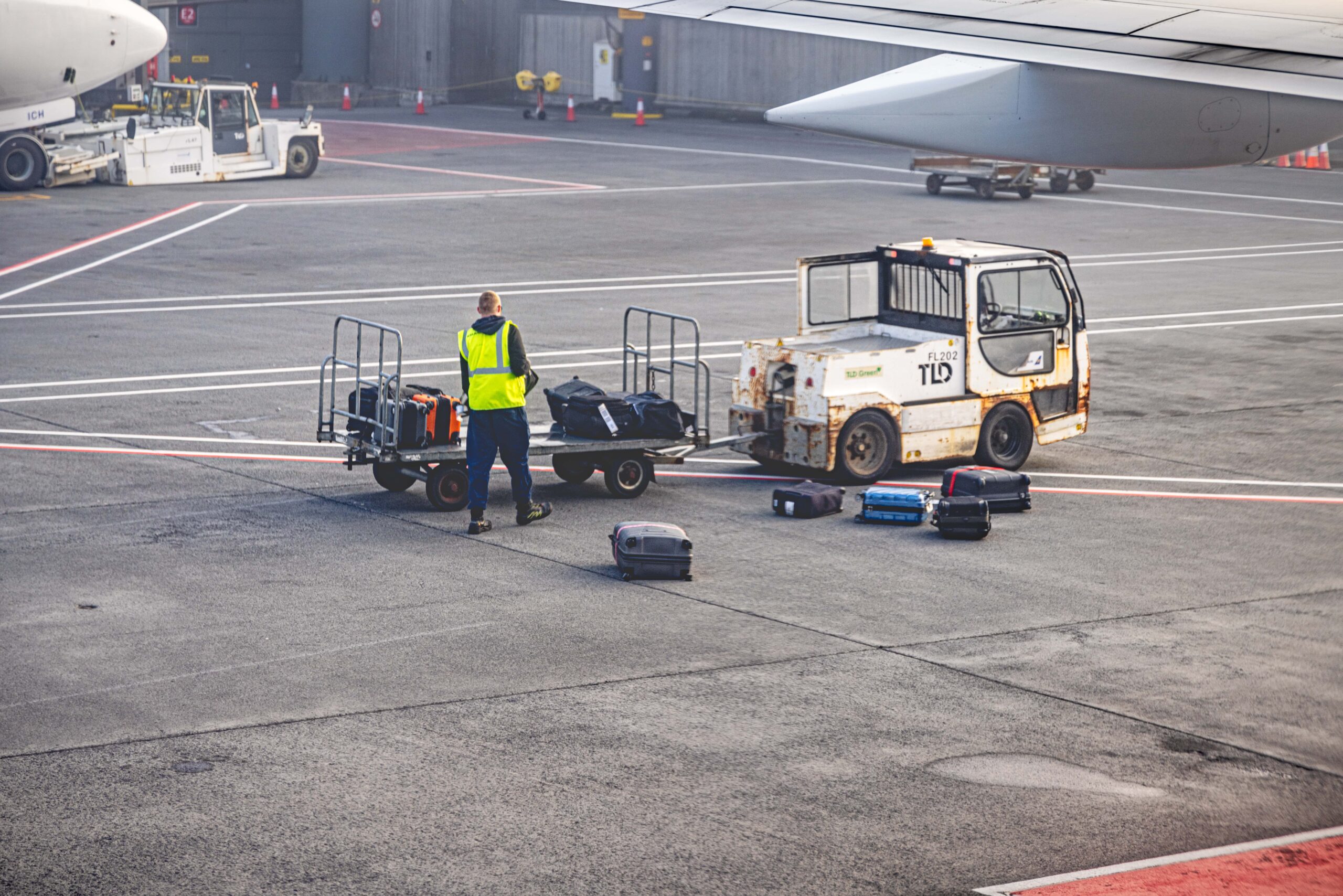Small airline businesses in Florin, California face unique scheduling challenges that can significantly impact operational efficiency, employee satisfaction, and ultimately, the bottom line. The complex nature of airline operations—with fluctuating flight schedules, maintenance requirements, crew availability, and regulatory compliance needs—makes effective scheduling a critical business function. Modern scheduling services offer sophisticated solutions designed to address these challenges, providing small airline businesses with tools that were once available only to major carriers. With the right scheduling services, small airline operations can optimize staff allocation, improve operational efficiency, and enhance overall business performance while meeting the specific demands of the Florin market.
In today’s competitive airline industry, scheduling services have evolved from basic timetabling tools to comprehensive workforce management systems. These platforms incorporate advanced features like automated shift creation, real-time updates, regulatory compliance monitoring, and employee self-service options. For small airline businesses in Florin, implementing effective employee scheduling solutions can be the difference between struggling with constant staffing issues and operating a streamlined, profitable business that effectively serves the local community while maintaining high levels of employee satisfaction and retention.
Key Challenges in Airline Scheduling for Small Businesses
Small airline businesses in Florin face numerous scheduling challenges that can impact operational efficiency and profitability. Understanding these challenges is the first step toward implementing effective solutions. The aviation industry presents unique complexities when it comes to workforce management, especially for smaller operations with limited resources.
- Fluctuating Demand Patterns: Airline scheduling must account for seasonal variations, holiday surges, and unpredictable demand changes that are particularly relevant in Florin’s regional market.
- Complex Regulatory Compliance: FAA regulations, California labor laws, and industry-specific requirements create a compliance maze that scheduling systems must navigate to avoid costly penalties.
- Crew Qualification Management: Tracking certifications, training requirements, and rest periods for pilots, flight attendants, and ground crew requires sophisticated scheduling tools.
- Last-Minute Changes: Weather events, mechanical issues, and crew illnesses necessitate rapid schedule adjustments that can ripple throughout the entire operation.
- Limited Resource Allocation: Small airlines in Florin must maximize efficiency with fewer staff and aircraft compared to major carriers, making optimal scheduling even more crucial.
- Employee Work-Life Balance: Meeting staff preferences while ensuring operational needs is particularly challenging in 24/7 airline operations, yet essential for employee retention.
According to research in the state of shift work trends, airlines that implement effective scheduling solutions can reduce overtime costs by up to 30% and improve staff retention rates. Small businesses in Florin’s aviation sector can benefit significantly from addressing these challenges with dedicated scheduling services designed for their unique operational context.
Benefits of Implementing Modern Scheduling Services
When small airline businesses in Florin implement modern scheduling services, they can realize numerous benefits that directly impact their operational efficiency and financial performance. These advantages extend beyond simple time management to provide comprehensive business improvements.
- Optimized Labor Costs: Advanced scheduling algorithms ensure optimal staff coverage while minimizing overtime and preventing overstaffing during slower periods, directly impacting the bottom line.
- Improved Operational Efficiency: Automated scheduling reduces the administrative burden on managers, allowing them to focus on strategic tasks rather than spending hours creating and adjusting schedules manually.
- Enhanced Employee Satisfaction: Self-service features allow staff to view schedules, request time off, and swap shifts through mobile apps, improving work-life balance and employee engagement.
- Reduced Compliance Risks: Automated tracking of work hours, rest periods, and qualifications helps ensure compliance with FAA regulations and California labor laws, reducing legal exposure.
- Data-Driven Decision Making: Comprehensive reporting and analytics provide insights into staffing needs, productivity patterns, and labor costs, enabling more informed business decisions.
- Decreased Turnover: Fair, transparent scheduling practices and respect for work-life balance contribute to higher retention rates, reducing costly recruitment and training expenses.
A study highlighted in shift scheduling strategies research found that airlines implementing modern scheduling services reported a 25% reduction in last-minute staffing issues and a 15% improvement in on-time performance. For small airline businesses in Florin, these improvements can translate directly to better customer service, increased operational reliability, and stronger competitive positioning in the regional market.
Essential Features for Airline Scheduling Software
When selecting scheduling software for a small airline business in Florin, it’s crucial to identify solutions with features specifically designed to address aviation industry needs. The right scheduling platform can transform operations, but only if it contains the functionality necessary for airline-specific challenges.
- Crew Qualification Tracking: The ability to monitor certifications, training requirements, and currency qualifications ensures that only properly qualified staff are scheduled for specific roles and responsibilities.
- Fatigue Risk Management: Sophisticated algorithms that track duty time limitations, rest requirements, and fatigue factors help maintain safety and regulatory compliance with working time directives.
- Real-time Notifications: Instant alerts about schedule changes, delays, or cancellations keep all staff informed through team communication channels, reducing confusion and improving response times.
- Mobile Accessibility: Cloud-based platforms with robust mobile apps allow staff to access schedules, submit availability, and request swaps from anywhere, particularly important for crews who are frequently on the move.
- Integration Capabilities: Seamless connection with payroll, HR, flight operations, and maintenance systems creates a unified ecosystem that prevents data silos and administrative duplication.
- Scenario Planning Tools: The ability to model “what-if” scenarios helps planners prepare for seasonal changes, special events, or potential disruptions specific to Florin’s operational environment.
According to industry experts on key scheduling features, the most effective airline scheduling solutions offer customizable dashboards that provide relevant information to different user types. For instance, managers need comprehensive oversight of all operations, while individual crew members require personalized views of their upcoming shifts and compliance status. Platforms like Shyft for airlines offer specialized features developed specifically for aviation industry needs.
Optimizing Employee Satisfaction Through Scheduling
For small airline businesses in Florin, employee satisfaction is directly linked to scheduling practices. Thoughtful, employee-centric scheduling can dramatically improve morale, reduce turnover, and enhance service quality. The aviation industry has historically struggled with work-life balance issues, making this aspect of scheduling particularly important.
- Preference-Based Scheduling: Systems that allow employees to input availability preferences and shift priorities create more accommodating schedules that respect personal needs and improve satisfaction.
- Fair Distribution of Desirable Shifts: Algorithms that ensure equitable allocation of premium shifts (like daytime hours) and less desirable ones (overnight or holiday shifts) prevent perceptions of favoritism.
- Advanced Notice of Schedules: Publishing schedules further in advance allows employees to plan their personal lives more effectively, reducing stress and improving work-life balance.
- Shift Trading Capabilities: User-friendly shift marketplace platforms empower employees to resolve their own scheduling conflicts by trading shifts within compliance parameters.
- Recognition of Seniority: Scheduling systems that factor in years of service when allocating preferred shifts can boost retention of experienced staff, particularly valuable in the skilled airline workforce.
- Transparent Processes: Clear communication about how schedules are created, how requests are prioritized, and how conflicts are resolved builds trust in the scheduling system.
Research from the work-life balance initiatives field suggests that airlines implementing employee-centric scheduling see up to 40% reductions in absenteeism and significant improvements in service quality metrics. In Florin’s competitive aviation market, these improvements can translate to meaningful competitive advantages through better customer experiences delivered by more engaged employees.
Implementation Best Practices for Small Airlines
Successfully implementing scheduling services in a small airline business requires careful planning and execution. Following industry best practices can help ensure a smooth transition and maximize the return on investment. For Florin-based aviation companies, these implementation strategies can make the difference between success and disruption.
- Phased Implementation Approach: Introducing new scheduling systems incrementally—perhaps starting with ground staff before moving to flight crews—reduces operational risks and allows for learning and adjustment.
- Comprehensive Stakeholder Involvement: Including representatives from all departments (pilots, flight attendants, maintenance, customer service) in the selection and implementation process ensures the system meets diverse needs.
- Thorough Data Migration: Carefully transferring historical scheduling data, employee qualifications, and preference information prevents disruptions during the transition.
- Customized Training Programs: Developing role-specific training ensures that all users—from administrators to occasional users—can effectively utilize the system’s features relevant to their responsibilities.
- Post-Implementation Support: Establishing dedicated support resources for the first few months after launch helps quickly resolve issues and prevent frustration among users adapting to new processes.
- Continuous Improvement Framework: Setting up regular review cycles to evaluate system performance and identify optimization opportunities ensures the solution evolves with the business.
According to implementation and training experts, successful scheduling system implementations typically require a 3-6 month timeline for small airlines, with the most successful projects allocating significant resources to change management and communication. Creating a clear implementation roadmap with quick wins helps maintain momentum and demonstrate value throughout the process.
California Compliance Considerations for Airline Scheduling
Small airline businesses in Florin must navigate a complex regulatory landscape that includes both federal aviation regulations and California-specific labor laws. Scheduling services must be configured to address these compliance requirements to avoid costly penalties and legal issues.
- California Meal and Rest Break Requirements: Unlike some states, California mandates specific meal and rest breaks that must be tracked and enforced through scheduling systems, with special provisions for the transportation sector.
- Predictive Scheduling Regulations: Several California municipalities have enacted fair workweek ordinances requiring advance notice of schedules, predictability pay for changes, and other employee protections that scheduling systems must accommodate.
- Overtime Calculation Rules: California’s daily overtime rules (over 8 hours in a day) differ from federal standards and must be correctly configured in scheduling software to prevent wage violations.
- FAA Duty Time Limitations: Federal regulations governing flight crew duty periods, required rest, and maximum hours must be automatically enforced by scheduling systems alongside state requirements.
- Documentation Requirements: California requires employers to maintain detailed records of employee hours, breaks, and schedule changes, functionalities that must be built into scheduling solutions.
- Split Shift Premium Pay: California requires additional compensation for non-exempt employees working split shifts, a common practice in the airline industry that scheduling systems must track and calculate.
Effective compliance with health and safety regulations requires scheduling systems with built-in rule engines that can simultaneously apply federal aviation requirements and California labor laws. According to legal compliance experts, scheduling software should include automated alerts for potential violations before they occur, allowing managers to make proactive adjustments and maintain comprehensive compliance documentation.
Technology Integration for Seamless Operations
For small airline businesses in Florin, the value of scheduling services is maximized when they integrate smoothly with other operational systems. Creating a connected technology ecosystem eliminates data silos, reduces manual processes, and provides a more comprehensive view of operations.
- Payroll System Integration: Direct connection between scheduling and payroll ensures accurate compensation based on actual hours worked, shift differentials, and premium pay calculations without manual data entry.
- Human Resources Information Systems: Synchronization with HR databases maintains current employee information, qualifications, and employment status across all systems automatically.
- Flight Operations Software: Integration with flight planning and operations systems ensures crew scheduling aligns with aircraft availability, maintenance requirements, and flight plans.
- Time and Attendance Tracking: Connected time tracking tools provide real-time visibility into attendance, tardiness, and actual hours worked compared to scheduled hours.
- Training Management Systems: Integration with training records ensures that scheduling considers upcoming certification requirements and automatically adjusts for training sessions.
- Mobile Applications: Employee-facing mobile apps facilitate real-time communication, schedule access, and shift management through intuitive mobile experiences.
According to integration specialists, small airlines that implement fully integrated scheduling solutions can reduce administrative overhead by up to 70% compared to using disconnected systems. Modern API-based integration approaches make it increasingly feasible for small airlines to achieve enterprise-level system connectivity without massive IT investments, leveraging cloud computing technologies for cost-effective solutions.
Future Trends in Airline Scheduling Services
The landscape of scheduling services for airline businesses continues to evolve rapidly. Small airlines in Florin should be aware of emerging trends that may influence their scheduling strategy and technology investments in the coming years.
- AI-Powered Scheduling Optimization: Advanced artificial intelligence is revolutionizing crew scheduling by analyzing thousands of variables simultaneously to create optimal schedules that balance operational needs, compliance requirements, and employee preferences.
- Predictive Analytics for Demand Forecasting: Machine learning algorithms are improving the accuracy of passenger demand forecasts, allowing for more precise staffing levels that reduce both understaffing and labor costs.
- Dynamic Real-Time Rescheduling: Emerging systems can automatically adjust schedules in response to disruptions like weather delays or mechanical issues, immediately identifying available qualified staff for replacement shifts.
- Employee Wellness Optimization: New scheduling approaches are incorporating fatigue science and chronobiology to create healthier shift patterns that improve safety, performance, and long-term employee health.
- Blockchain for Credential Verification: Distributed ledger technology is beginning to be used for secure, tamper-proof record-keeping of employee qualifications and training certifications critical for regulatory compliance.
- Cross-Company Talent Sharing: Innovative staff sharing platforms are emerging that allow smaller airlines to temporarily share qualified personnel during demand fluctuations, creating new flexibility in workforce management.
Research from scheduling technology trends suggests that airlines adopting these advanced approaches can achieve 5-15% additional efficiency gains beyond traditional scheduling systems. For small airline businesses in Florin, strategically incorporating these innovations—perhaps beginning with AI-powered optimization—can provide competitive advantages through more efficient operations and improved employee experiences.
Measuring ROI from Scheduling Investments
For small airline businesses in Florin, implementing advanced scheduling services represents a significant investment. Establishing clear metrics to measure return on investment helps justify the expenditure and identify areas for continuous improvement. A data-driven approach to evaluating scheduling effectiveness is essential for long-term success.
- Labor Cost Reduction: Track changes in overtime hours, premium pay incidents, and overall labor costs as a percentage of revenue to quantify direct financial benefits.
- Administrative Time Savings: Measure the reduction in hours managers spend creating, adjusting, and communicating schedules to calculate administrative efficiency gains.
- Compliance Violation Reduction: Monitor the frequency and cost of regulatory violations, including both penalties and remediation expenses, before and after implementation.
- Employee Turnover Impact: Compare retention rates and calculate the reduced costs of recruitment, training, and lost productivity from employee departures.
- Service Quality Improvements: Analyze customer satisfaction scores, on-time performance metrics, and service recovery incidents to quantify operational improvements.
- Employee Satisfaction Metrics: Utilize surveys and feedback mechanisms to track improvements in schedule satisfaction, work-life balance, and overall engagement.
According to industry analysts studying advanced scheduling tools, small airlines typically achieve full ROI within 12-18 months of implementation. Creating a balanced scorecard that includes both financial and operational metrics provides the most comprehensive view of scheduling impact. Workforce analytics capabilities built into modern scheduling platforms can automate much of this measurement, providing real-time dashboards that demonstrate ongoing value.
Conclusion
Effective scheduling services represent a critical strategic investment for small airline businesses in Florin, California. By implementing the right scheduling solution, these operations can simultaneously improve operational efficiency, enhance employee satisfaction, ensure regulatory compliance, and boost profitability. The aviation industry’s unique challenges—including complex regulatory requirements, qualification management, and unpredictable disruptions—make sophisticated scheduling tools particularly valuable for small airlines seeking to compete effectively in a challenging market environment.
As scheduling technology continues to evolve, with advancements in AI, predictive analytics, and integration capabilities, small airline businesses have unprecedented opportunities to leverage these tools for competitive advantage. By selecting systems with aviation-specific features, focusing on employee-centric scheduling practices, ensuring compliance with both federal and California regulations, and measuring outcomes systematically, Florin’s small airline businesses can transform their scheduling from an administrative burden into a strategic asset. The investment in modern scheduling services delivers not just immediate operational improvements but also positions these businesses for sustainable growth and success in an increasingly dynamic industry landscape.
FAQ
1. What makes airline scheduling different from other industries?
Airline scheduling is uniquely complex due to several factors: 24/7 operations that span multiple time zones; strict regulatory requirements from both federal aviation authorities and state labor laws; qualification and certification tracking for specialized roles; interdependence between aircraft, crew, and support staff scheduling; and high consequences for disruptions. Unlike many industries, airlines must also manage fatigue risk as a safety consideration, track duty limitations precisely, and ensure proper rest periods for flight crews. For small airline businesses in Florin, these complexities exist regardless of operation size, making specialized scheduling solutions particularly valuable.
2. How can small airlines afford enterprise-level scheduling systems?
The rise of cloud-based, subscription model scheduling services has made sophisticated solutions accessible to small airlines through several approaches: Software-as-a-Service (SaaS) pricing models eliminate large upfront investments in favor of predictable monthly fees; modular systems allow businesses to implement only the features they need initially; scalable pricing based on employee count ensures costs align with business size; and specialized aviation industry solutions offer pre-configured templates that reduce implementation costs. Many providers also offer tiered service plans that allow small airlines to start with essential features and add capabilities as they grow, creating a pathway to enterprise-level functionality without enterprise-level investment.
3. What specific California regulations affect airline scheduling in Florin?
California has several state-specific regulations that impact airline scheduling beyond federal requirements. These include: daily overtime rules that require premium pay after 8 hours in a workday (not just 40 hours in a week); mandatory meal breaks (30 minutes for shifts over 5 hours) and rest breaks (10 minutes for every 4 hours worked); split shift premium pay requirements; reporting time pay for employees who show up but aren’t needed for a full shift; and in some municipalities, predictive scheduling ordinances requiring advance notice of schedules and compensation for last-minute changes. Additionally, California has stricter record-keeping requirements, mandating that employers maintain detailed documentation of hours worked, breaks taken, and schedule changes.
4. How long does it typically take to implement a new scheduling system for a small airline?
Implementation timelines for scheduling systems in small airlines typically range from 3-6 months from contract signing to full deployment, depending on complexity. The process usually follows these phases: initial configuration and setup (2-4 weeks); data migration from existing systems (2-3 weeks); integration with other operational systems (3-6 weeks); testing and validation (2-4 weeks); training for administrators and users (2-3 weeks); and a phased rollout often beginning with a pilot group before full implementation. Factors that can extend timelines include complex integrations with legacy systems, extensive customization requirements, or the need to accommodate unique operational processes. Many providers offer accelerated implementation options with pre-configured templates specifically designed for small airline operations.
5. What mobile capabilities should small airlines look for in scheduling solutions?
Effective mobile capabilities are particularly important for airline operations where staff are frequently on the move. Essential mobile features include: real-time schedule access that allows employees to view current and future schedules from anywhere; push notifications for schedule changes, delays, or urgent coverage needs; shift trade marketplaces that enable employees to post and claim open shifts directly from their devices; availability and time-off request submission capabilities; clock-in/clock-out functionality with geofencing to verify location; qualification and compliance alerts that notify staff of upcoming training or certification requirements; and offline access that allows employees to view critical information even without internet connectivity. The best mobile solutions offer equivalent functionality on both iOS and Android platforms with intuitive interfaces designed specifically for small screens.












